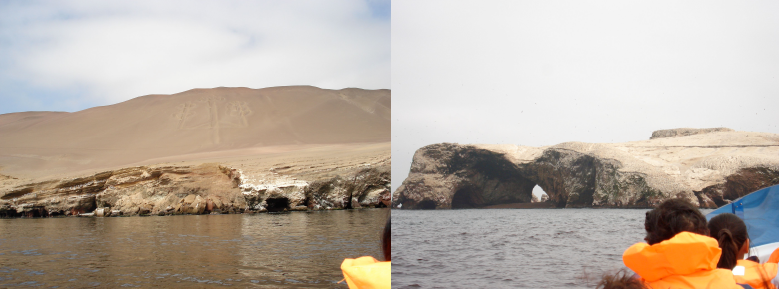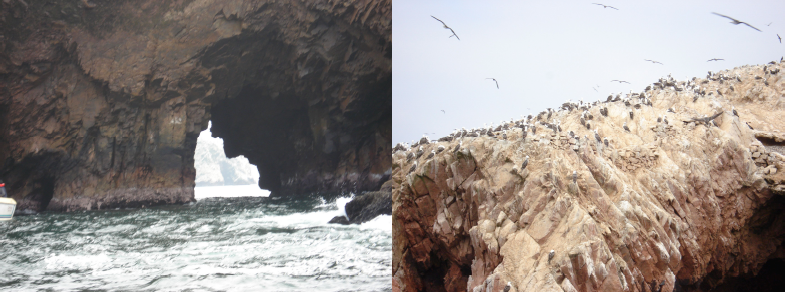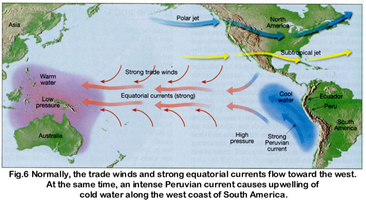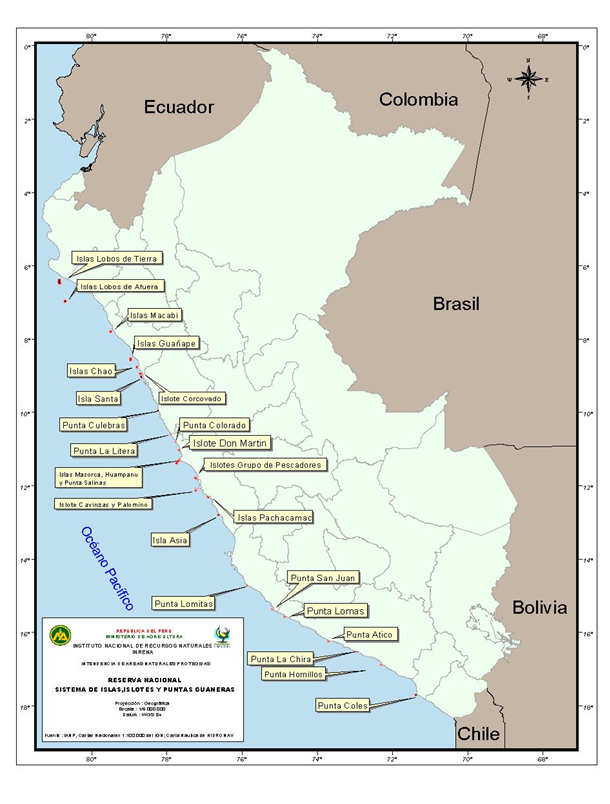|
|
Examples
The United States of America
Background:
- A large developed country with a long coastline.
- The United States has the largest exclusive economic zone of an country in the world, at around 4.4 million square miles (11 million square kilometers) (Thurman & Trujillo 2002) and strong enforcement capabilities over their waters.
- High fish demand, generally not for subsistence.
- GDP: $13.13 trillion USD (2006 est)
Political sylte: Democratic, Federal Republic
The United States has an established system of 14 national marine sanctuaries, covering an area of 18,000 square miles (47,000 square kilometers). The United States also recently established the Northwestern Hawaiian Islands National Marine Monument, which is currently the largest marine protected area in the world. It covers an area of 140000 square miles (360000 square kilometers) (NOAA National Marine Sanctuaries).
The United States has strongly established fisheries and environmental regulations (Magnuson-Stevenson Act 1976) and also has national legislation that also addresses the creation of MPAs (National Marine Sanctuaries Act 1972).
Problems
- Existing marine sanctuaries do not have sufficient management authority under the National Marine Sanctuaries Act.
As it currently stands, the management authorities of the marine sanctuaries only have very limited ability to regulate fishing and boating within the borders of the sanctuary (Stellwagen Bank NMS 2007). Currently, restrictions on fishing are the responsibility of the National Marine Fisheries Service and regional fisheries councils. While such organizations have placed restrictions in response to sanctuary designations, these measures do not generally include the no-take, no-disturbance areas that are required under our proposal (National Academy of Public Administration 2000).
- Cultural issues and the conflict between development and conservation
Fishing and other maritime activities have been a longstanding and time-honored part of American culture. Any measure that would increase fishing restrictions would likely face significant, short-term public opposition, especially among fishermen.
Additionally, other stakeholders, such as minerals interested have historically opposed the establishment of MPAs. For example, the establishment of the Flower Garden Banks National Marine Sanctuary off the coast of Texas was delayed by almost 15 years due to concerted oil industry lobbying against the sanctuary (Flower Garden Banks 2007).
- Environmental protection and science are not national priorities
Given current affairs, environmental protection and science are not among top national priorities for the United States. This limits the funding available for scientific activities, and that available for the establishment of new MPAs.
- Lack of public awareness interferes with environmental protection
In general, the American public does not have high ocean literacy, a strong awareness of ocean-related issues, or high general environmental awareness. Such a lack of knowledge and awareness makes it extremely difficult to demonstrate the necessity of any protective measures. It interferes with attempts at environmental protection, regardless of type, but especially the establishment of marine protected areas. It is extremely difficult to gain support for measures to protect that about which the public knows little.
- Difficulties in international relations makes global action difficult
Recent American foreign policy has had the unfortunate effect of alienating and reducing the global influence of the United States. This has made the implementation of ideas perceived to come from American sources at times difficult or impossible. At the same time, the related issues of the oceans and marine protected areas are so global that a multilateral approach is almost certainly required, especially for management in waters outside the jurisdictional control of states.
Recommendations:
- Streamline the process for establishing new marine protected areas
Currently, the process for new MPAs has difficult and requires multiple levels of bureaucracy, public hearings, and fact-finding. These barriers have meant that over the 35 years of the National Marine Sanctuaries act only 14 marine sanctuaries have been established. In general, less emphasis should be placed on establishing the effectiveness of any given proposal relative to all other management strategies. Instead, given the scientific consensus on the effectiveness reserves, more effort should be placed into where and how to implement reserves, as opposed to whether to implement.
There are other alternatives to national legislation. For instance, note that the Northwestern Hawaiian Islands National Monument was established by an executive order of the president. This example hints at a more efficient method for establishing marine sanctuaries.
- Strengthen and expand the current National Marine Sanctuaries system through explicit legislation and direct funding
Currently, MPAs in the United States account for about 3.6% of its total exclusive economic zone. This is a very good beginning and the coverage significantly above the global average. However, it is important to note that these coverage figures do not contain a significant proportion of no-take reserves. Also, in general, management authorities of marine sanctuaries do not currently possess the direct authority to regulate fishing, shipping, and other human activities. Such authority should be granted under a strengthened Marine Sanctuaries Act or other legislation.
The United States needs to continue its efforts to expand the National Marine Sanctuaries system with a special emphasis on the increase of the use of no-take zones in its management strategy. The goal of covering at least 10% of its jurisdiction should be explicitly mandated in new, strengthened legislation or through executive order.
- Improve the layout of new and existing marine sanctuaries
A network of carefully targeted smaller reserves, operated at more local levels of government would be an excellent way to augment the existing federal sanctuaries. Smaller reserves would make it easier to target particularly threatened, unique, or interesting ecosystems without the need for closing off broad swaths of the ocean.
Also, combining the operation of marine and land-based protected areas will naturally expand the jurisdiction of organizations like the National Park Service to marine sanctuaries. Consolidation can reduce costs, streamline operations, and make the establishment of coastal reserves faster and easier (Baumgardner, et. al. 2005).
- Engage in a formal public ocean education program
Ocean education should be a mandatory part of all public school curricula. The oceans are represent 71% of planet's surface and a significantly larger percentage of its biosphere volume (Thurman & Trujillo 2002). The current neglect for ocean literacy in many school systems is a terrible oversight and should be rectified immediately. The National Marine Sanctuaries system can be a terrific educational resource, whether through direct access or by remote access through technological solutions. Also, consider that school aged children have traditionally been an excellent conduit for bringing awareness to parents (Nugent 2004).
- Sponsor public awareness campaigns
The general population must be made and kept informed of ocean issues, in particular those regarding MPAs. One of the most effective way to do that in the united is in the use of mass-market media. These campaigns can be broadly targeted and disseminated in a wide variety of formats, from radio and TV to print advertising.
- Work internationally to encourage global conservation and movement towards the 10% plan
Although the global influence of the United States has diminished in recent years, it is still one of the leaders in the international community. The United States is the world's largest contributor of direct financial aid to developing nations and still possess considerable clout. If environmental protection is made a national priority, aid could be made contingent on positive steps by partner country. The United States is capable of and should be willing to provide technical, scientific, and financial assistance to other nations that show an interest in establishing MPAs or in taking other steps towards global sustainability.
At the same time, the United States needs to set a good example for the rest of the world. Increased and better publicized domestic programs to reduce energy consumption and wastefulness will go a long way towards improve the American environmental public image worldwide.
People's Republic of China
Background:
- A developing country with long coastline (18,000 km) and large fish demand.
- Freshwater resources rank 6th in the world, but the resources per capita is only one fourth of the world's average due to large population (Chinese Information Office 1998).
- GDP: $10.17 trillion (2006 est.)
- The inefficiency of the management system constrains protection
The system is divided into national, provincial and municipal levels, and ateach level there is a very complex bureaucracy. Various agencies have their own management structure and funding sources. Each agency is only actively developing part of the protected areas, which leads to competition between agencies, redundant construction, fragmentation, and overall inefficiency. Whether at the national level or in the provincial and municipal levels, it is extremely difficult to achieve the unity in the planning and implementation of protected areas.
- The contradictions between "protection" and "development"
As a rapidly developing country with a large fish demand, the contradiction is notable. Unlike inland nature reserves, marine reserves are divided into different areas for protection and exploitation. This is an apparent conflict of interest to have areas under protection used for both protection and exploitation.
- The overall distribution and layout of marine reserves must be improved
China's state-level distribution of marine nature reserve is extremely uneven; concentrated distribution is a very prominent phenomenon. For example, there are seven national level marine reserves in the northeast side of the Bohai Strait and eight in the southwest of the Beibu Bay and Hainan Island; however, there are nine along the entire coastline from Shandong to Guangdong.
- Adjust the management system of marine reserves
The system needs to be changed for the future. In the long run, management of all reserves should be centralized under the national government instead of being fragmented among local governments. However, for short term such a reorganization is not feasible. The best temporary solution would be to set up a central team with members from all government departments that currently have a role in managing marine protected areas. The goal of such a team would be to facilitate communication and reduce redundancies, making the management more effective and practical.
- Explicitly consider both Conservation and Development in the objectives of marine protected areas
The goal of the marine protected areas must be clear in government regulations and policies. Both the local people and the region's economic interests and environmental protection should be taken into consideration:
- In response to China's rapid tourism development, research should be conducted towards making marine nature reserves viable for eco-tourism and to improve the development of tourism management capacity.
- Research within the reserves should be utilized to help develop ecologically-friendly aquaculture for surrounding communities.
- Diversify funding to both private and government sources
Currently, the central government is responsible for the full cost of the operation of national level reserves. Likewise, local governments are responsible for the full cost of lower level reserves. Government departments at all levels should actively encourage various ways to raise operating funds and to offer necessary assistance, guidance and management. For example, private investment should be encouraged to assist the implementation of government policy.
- Expand the system of marine protected areas
As a developing country, it is hard to establish and manage marine reserves. As such, the effectiveness of each new reserve must be care fully considered before action is taken. Special emphasis should be made to develop reserves in habitats with high biodiversity or those inhabited by endangered species.
Political style: communism, strict government control.
108 marine nature reserves at different levels of government have been established, covering a total area of about 30,000 square miles (76,900 square kilometers) (Liu & Qin). Among these reserves, 30 are at provincial level, more than 60 at national level and the remainder are at the county level. All known endangered marine species in Chinese water are protected to some extent by these reserves (Xinhua 2006).
China has an established legal management system for the protection of its marine resources. The stated general principle is "conservation first, then appropriate exploitation and sustainable development" (Xue 2005).
Problems:
Recommendations
Based partially on a report from China's Oceanic Administration Institute of Marine Development Strategy---an official department doing research and supplying suggestions and strategies to the government.
Peru
Peru is a nation located in South America, bordered on the north by Ecuador and Colombia, on the south by Chile and Bolivia, and on the east by Brazil. More importantly, it is bordered on the west along the extent of its coastline by the Pacific Ocean, which makes fishing a staple of the Peruvian economy. According to the FAO, exports accounted for more than one billion dollars in 2002 alone. (2003) This fishing is little regulated, and thus it is no surprise the fisheries have historically collapsed multiple times. For example, while anchovy catch peaked in the mid-1960s at about 13 million tons, after the fishery's collapse in 1973 that number fell to less than half a million tons. (Loayza, 1992) A plan that promotes the sustainable use of marine resources in Peru is therefore a must and needs to tailor to Peru's interests, both at the individual and governmental levels.
By default, putting limits on what, when, and how much can be fished will be ineffective. For example, IMARPE, the Peruvian Sea Institute, reported in 1998 that 90% of the fish caught was illegally smaller than the size limit. This is due to the lack of an ethical norm among the fishing class. Because of their usual indifference to the government in power, they do as they please, and there is not much in their way to stop them from fishing in a way convenient to them. The fact that the government is having difficulty enforcing current regulations will make new ones useless.
Instead, the quickest and most effective way of increasing the fish population in said waters is to advocate the establishment of intelligently placed marine protected areas, along with new aquaculture programs to bring fish up to sustainable levels. The former is easier to enforce, because it is no longer a question of when, what, and how much but rather a yes or no question.
Currently, approximately 15 percent of Peru's territory is protected under the charge of SINANPE, the protected areas division of INRENA, the National Institute of National Resources. (INRENA, 2007) However, Ing. Jorge Ugaz, the head of this division, has said that there currently exists only one marine reserve--the Paracas National Reserve (Reserva Nacional de Paracas), founded in 1975.
Pronaturaleza, a Peruvian non-governmental conservation agency, has developed two blueprints for the establishment of marine reserves in Peru. One advocates the establishment of the waters off Mancora, a northwestern province, as a marine protected area. The other advocates the setting aside of a series of islands parallel to the coastline as such.
Mancora is located on the northwest edge of Peru, in the department of Piura and the province of Talara, as seen in Figure 1. The waters off its coast are among the richest fishing grounds in the world, something due to the geography of the region.
Figure 1
The Humboldt Current (See Figure 2) is a stream of cold water that travels from the south bordering the coast of South America. Along the way, it "pushes" cold water from about 200 meters below the sea towards the surface, resulting in temperatures of about 20 degrees Celsius at the surface, something unusual given Peru's close proximity to the equator. (Islas y Puntas del Conjunto Guanero) The Anti-Current pushes down from the north and collides with the Humboldt Current around northern Peru, displacing the latter towards the west where it meets up with the Equatorial Current which pushes on towards Polynesia. (Islas y Puntas del Conjunto Guanero) The fact that these currents affect how marine wildlife displace themselves essentially means that northern Peru is abounding in them. Whales, marine turtles, tuna, sharks, stingrays, and a myriad of marine birds are only a few of the many species that can be found there.
Figure 2
Every so often a current of warm water known as "El Niño" pushes up from the South Pacific, disrupting the Humboldt Current and displacing marine wildlife, causing both damage to the ecosystem and the inhabitants of Peru who depend on the sea for a living. (Islas y Puntas del Conjunto Guanero)
Aside from the problem of "El Niño," overfishing and petroleum ventures have proven to be devastating to the ecosystem. The latter, due to its very nature, causes damage to the ocean floor, and minor spills are a common occurrence. (Pronaturaleza, 2004) Pronaturaleza has therefore proposed to close off the area to all not motivated by scientific research by declaring it a marine protected area.
As Pronaturaleza said, "the Peruvian waters, in spite of being one of the most yielding [of fish] on the planet and possessing a high amount of biological diversity, paradoxically has been little studied and the studies and investigations that have been realized are almost none." In light of this fact, Pronaturaleza has also proposed the creation of a "Marine Scientific Station" (Estación Científica Marina) to conduct research in the area. This research would be focused on the ecosystem rather than the species that inhabit it, because the ecosystem is an essential aspect in the lifecycles of fish and other marine species. This is beneficial so that the implementation of aquaculture programs to restore fish populations can occur intelligently.
Figure 3
Difficulty arises in implementing this solution. Pronaturaleza, as a technologically well-equipped conservation agency, is willing to assume leadership. They have stated that initial funds necessary for the establishment of the proposed marine reserve will trickle in from sources such as the World Conservation Union (IUCN). Pronaturaleza will request the expertise of both the Institute of the Americas and the Scripps Institution of Oceanography for the purposes of research. The Peruvian Sea Institute (IMARPE) and the National Institute of National Resources (INRENA) will be expected to contribute to this project as well. Perhaps the most integral sources of cooperation, although the most difficult to acquire, will be the neighboring countries of Ecuador and Chile, because of their similar use of marine resources.
Pronaturaleza's other plan is to set a series of islands running parallel to the coast of Peru as a marine protected area (Figure 3), as well as expand the current Paracas National Reserve to include the Ballestas Islands. The latter is part of this series of islands currently under the charge of PROABONOS (Special Project to Take Advantage of Byproducts Provided by Marine Birds), but stands alone because of its place as a popular tourist destination.
Historically, the islands have been used as a source of guano, a world renown fertilizer. As stated above, these islands are currently under the control of PROABONOS, a government entity established in 1997 to protect the islands through the control of guano extraction. (Islas y Puntas del Conjunto Guanero) The idea is that control over said areas should be transferred over to SINANPE, the protected areas division of INRENA.
Protecting the islands and surrounding waters should be of top importance precisely because it can serve as a haven for many species. The anchovy, a key species because of its location on the food chain, tends to seek cooler waters upon the impact of "El Niño," which it can find near the coast or in shallow waters where it is most likely to be fished. (Islas y Puntas del Conjunto Guanero) A very productive fishing year can then very quickly result in at least a partial collapse of the species. Given that the islands are surrounded by shallow waters, the anchovies will have where to seek refuge, preventing the whole collapse of the fisheries, as happened in the 1970s.
The Ballestas Islands have been for many years the destination of choice for tourists seeking to experience nature in person, as shown in the pictures below. This is something which impacts the economy in a significant way. In fact, research has shown that, when all factors are taken into account, the Ballestas Islands generate three times as much revenue overall as the extraction of guano over the course of a year. (Islas y Puntas del Conjunto Guanero) The desire is to expand this tourist activity to the other islands in a way that minimizes impact on the environment.






